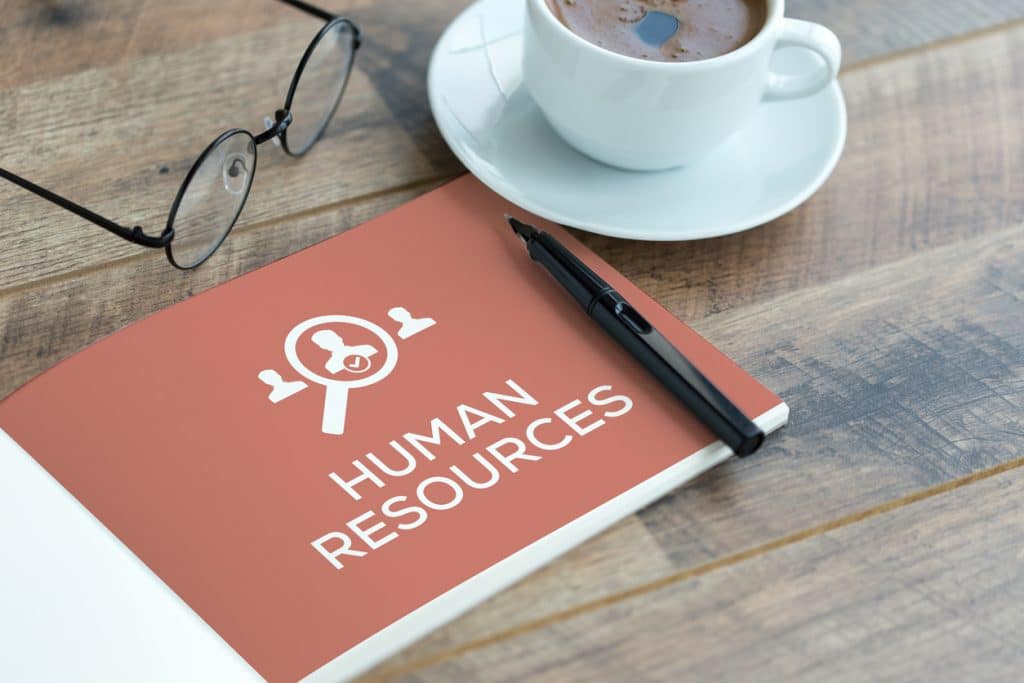
When it comes to HR compliance, businesses must take an active approach to ensure they meet all necessary regulations and requirements. Neglecting HR compliance can lead to hefty fines, lawsuits, and damage to a company’s reputation. In this article, we will discuss the importance of HR compliance, provide an HR compliance checklist with human resources audit questions, and offer tips on how to maintain compliance in your organization.
If you need additional guidance during your HR compliance audit, contact a BlueStone Human Resources Consultant for additional assistance.
Why is HR Compliance Important?
HR compliance is crucial because it protects the rights of employees and ensures that businesses are operating in accordance with federal, state, and local laws. It also helps companies maintain a positive work environment and prevent legal action. Failing to comply with HR regulations can result in costly fines, lawsuits, and a damaged reputation.
Conducting an HR compliance audit is crucial to ensure adherence to legal standards and internal policies. Utilizing an HR compliance checklist, companies can systematically review and verify that their human resources practices align with current laws and regulations. This process, guided by a comprehensive HR compliance audit checklist, helps in identifying areas of non-compliance, mitigating risks of legal liabilities, and enhancing overall workplace efficiency. Regular audits using these checklists foster a culture of compliance and contribute to a fair and equitable work environment. They are proactive in maintaining organizational integrity and safeguarding against potential legal challenges.
HR Compliance Checklist
When conducting an HR compliance audit, it’s essential to follow an HR compliance checklist and carefully review the following areas:
Recruitment and Hiring
Recruiting and hiring employees is the first step in building a strong workforce. To ensure HR compliance in this area, there are several key factors to consider. These include:
- Job descriptions, postings and interviews are compliant with federal and state laws, including the Americans with Disabilities Act (ADA).
- Interview questions are not discriminatory.
- Background checks, reference checks and drug-testing policies adhere to federal and state laws.
- Job offer letters clearly state that employment is at will.
- I-9 forms are appropriately completed.
- New-hire reporting requirements are met.
- Completed tax forms for each new hire are on file.
- Orientation and onboarding practices are in line with company policy.
Employee Classification
Proper classification of employees is crucial for HR compliance. There are three main classifications: exempt, non-exempt, and independent contractors. Misclassifying employees can lead to costly legal fees and back pay. To ensure that your business is properly classifying employees, consider the following:
- Job duties: Exempt employees must primarily perform executive, administrative, or professional duties. Non-exempt employees must be paid overtime for any hours worked over 40 hours in a workweek.
- Independent contractors: Independent contractors must meet certain criteria to be classified as such, including having control over their own work schedule and providing their own tools and equipment.
Wage and Hour Compliance
Wage and hour compliance is one of the most important aspects of HR compliance. Violations can result in expensive legal fees and back pay. To ensure that your business is complying with wage and hour laws, consider the following:
- Pay practices, including minimum wage and overtime, comply with the Fair Labor Standards Act (FLSA) and state requirements.
- Only permissible deductions are made from exempt employees’ pay.
- Nonexempt employees are paid according to their timekeeping records.
- Incentive pay and promotion programs are developed in an equitable manner.
- Employees are paid no less frequently than required by state law.
- The company has a formal compensation plan that aligns with business objectives.
Employee Benefits and Leave
Providing benefits and leave to employees is an important part of HR compliance. To ensure that your business is complying with benefit and leave laws, consider the following:
- Voluntary benefits such as health, wellness and retirement plans are administered according to laws such as the ACA, ERISA, COBRA, EEO, ADA and IRC.
- Benefit plan options and changes are effectively communicated to employees.
- Disclosure and filing requirements are met.
- Paid time-off policies are based on standardized procedures.
- Mandatory benefits, such as workers’ compensation and FMLA leave, are provided as required by law.
Company Policies and Procedures
Company policies are essential for any organization to operate smoothly. They should be clear, concise, and easy to understand, relevant and up-to-date, consistent with the law, accessible and readily available, consistent with organizational culture, supported by management, and comprehensive. To review your company’s core policies, consider starting with these areas:
- Company policies meet federal and state criteria, including those relating to equal employment opportunity, sexual harassment, and health and safety.
- Each employee receives a handbook detailing the company’s policies and procedures, code of conduct, and terms of employment.
- Labor law posters are displayed in conspicuous areas of the worksite.
- Personnel files and other employment records are retained as mandated by law.
- The company has a formal training plan, which describes training and development procedures for leaders and rank-and-file employees.
- HR policies are applied consistently and fairly across the organization.
Employee Performance Reviews
Performance reviews are an essential part of employee development and can play a significant role in improving employee performance. Keep these key areas in mind when conducting your HR compliance audit:
- Evaluations are conducted on each employee at least annually.
- Evaluations are done according to established guidelines.
- Performance issues, corrective actions and disciplinary measures are carefully documented.
Termination of an Employee
As HR practitioners, it’s essential to be equipped with the necessary skills to handle terminations efficiently. Termination is a sensitive topic that can be challenging to handle, when conducting your HR audit. To ensure that your company is compliant when terminating an employee, be sure to confirm the following:
- Terminations are based on company policy and the law.
- Procedures are in place for collecting company property from departing employees.
- Supporting documents, such as written warnings and resignation letters, are appropriately filed.
- Separated employees receive a written notice explaining their post-termination benefits.
- Final paychecks are delivered by the next regular payday or the state-mandated deadline.
Tips for Maintaining HR Compliance
Stay Up-to-Date on Laws and Regulations
- It’s essential to stay informed about changes to HR laws and regulations at the federal, state, and local levels.
Train Employees
- Make sure all employees are trained on HR policies and procedures to ensure compliance.
Human Resources Compliance Audits
- Conduct regular audits to ensure compliance with HR regulations.
Document Everything
- Keep detailed records of all HR-related activities, such as hiring, terminations, and performance evaluations.
Seek Professional Help
- Consider hiring an HR consultant or attorney to ensure compliance with all HR regulations.
HR compliance is critical for businesses of all sizes. Failing to comply with HR regulations can lead to costly fines, legal action, and damage to a company’s reputation. By conducting regular audits, staying up-to-date on laws and regulations, and seeking professional help when necessary, businesses can maintain HR compliance and ensure a positive work environment for all employees.
Following our HR compliance checklist can be a good framework for starting and carrying out an HR compliance audit. By adhering to this HR compliance checklist, companies can get a jump on addressing compliance issues, reducing the risk of non-compliance, and fostering a culture of transparency and accountability in their HR practices.
If you have any questions or concerns about the above information, an HR compliance checklist, or need help conducting an HR compliance audit, please contact a BlueStone representative today!
HR Compliance FAQs
1. Why is HR compliance important?
HR compliance is important because it ensures that businesses operate in accordance with federal, state, and local laws, protecting the rights of employees and preventing legal action. Neglecting HR compliance can lead to hefty fines, lawsuits, and damage to a company’s reputation.
2. What is included in an HR compliance checklist?
An HR compliance checklist should include a review of recruitment and hiring practices, employee classification, wage and hour compliance, employee benefits and leave policies, company policies and procedures, employee performance reviews, and termination procedures.
3. What should be considered when classifying employees?
Proper classification of employees is crucial for HR compliance. To ensure proper classification, consider job duties, as exempt employees must primarily perform executive, administrative, or professional duties, while non-exempt employees must be paid overtime for any hours worked over 40 hours in a workweek. Independent contractors must also meet certain criteria to be classified as such, including having control over their own work schedule and providing their own tools and equipment.
4. What should be considered when ensuring wage and hour compliance?
Wage and hour compliance is important and can be achieved by ensuring that pay practices, including minimum wage and overtime, comply with the Fair Labor Standards Act (FLSA) and state requirements. Only permissible deductions should be made from exempt employees’ pay, non-exempt employees should be paid according to their timekeeping records, and incentive pay and promotion programs should be developed in an equitable manner.
5. What should be considered when providing employee benefits and leave?
To ensure that your business is complying with benefit and leave laws, consider the following: voluntary benefits such as health, wellness, and retirement plans are administered according to laws such as the ACA, ERISA, COBRA, EEO, ADA, and IRC; benefit plan options and changes are effectively communicated to employees; disclosure and filing requirements are met; paid time-off policies are based on standardized procedures; and mandatory benefits, such as workers’ compensation and FMLA leave, are provided as required by law.
©2021




